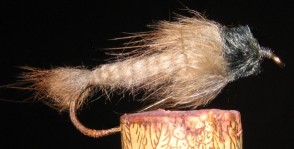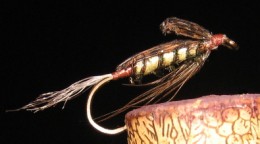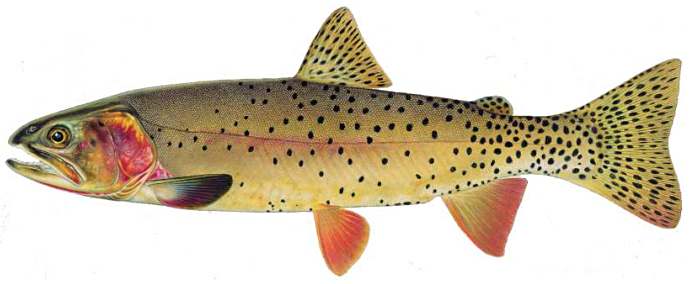Madison, Firehole, Gibbon, Swift & Clear,
some bugs sparse - all on schedule,
still no grayling.

-- Early morning on the Madison River, at Barn's #1 produced a couple of nice Brown Trout on a size 4, dark gray 'Casual Dress' nymph. We started with this fly as a prospecting situation to see if the fish were still dreaming of Salmonflies - they are.
-- Mid-morning on the Firehole River, east of Goose Lake had a modest Gray Drake spinner fall, and a scattered hatch of PMD's. The fish were taking both - we think. We floated some small, size 14 -16 elk hair caddis to them and they ate brunch.
-- Still on the pilgrimage for our annual Grayling; we went to the Big Riffle Bend, just upstream from Tuff Cliffs on the Gibbon River. The water is high and clear, full of oxygen, and some small stoneflies. This section requires a walk across the meadow of about 3/8 mile, and there are only a couple of places to park.
-- The day was perfect. Low broken clouds scudded across the sky and the breeze kept most of the mosquitoes down. On this section of the Gibbon, there are Mountain Whitefish, Brook Trout, Rainbow Trout, Brown Trout and Grayling. We caught a few of each, (except Grayling,) on the same elk hair caddis during our mid-day break. Brook Trout are rare in this section and the one we caught was about 11" - still competing.
-- We sank a 'Yellowstone Sally'** and took a nice brown trout of about 15" in the tail-out of the last pool before the valley widens into the meadow section. Then back to the car.
-- Lunch was consumed amid the gaggle of visitors at the Gibbon Falls overlook. The falls still have some color and are running fast. Some neighbors stopped and reported that the Gibbon was fishing good up near Virginia Cascades, and in the big pull-out near chocolate spring.
-- We drove to the parking area at the Norris Campground Meadow. The Upper Gibbon River is in perfect early season form. The one-cast water south of the Canyon Village Road is high, swift, and clear. We fished up to the waist of the meadow, and then, back down. Today, only the Brook Trout were taking. They were taking everything! We used elk hair caddis, prince nymphs, bead head hare's ear nymphs, and some small, (18 - 20,) mosquitoes - sweet revenge. The meadow had dried to the perfect mosquito breeding stage, and they are taking advantage of it.
-- The big meadow section, across the road, and west of Norris campground is beginning to move toward seasonal flow, and several fish were rising in the bend that turns the river south, (about 1/4 mile from the road.) Dirk took a couple of small Browns and a sea monster of some sort. We never saw it, but it torpedoed upstream like a Smith River Steelhead headed for the interstate in northern California. Excitement and failure to re-tie a 6x tippet caused Dirk to exercise a long forgotten stream of explicatives.
-- A dark cloud sent us back to the car and the ride home. We arrived to a gentle shower and a rainbow. The metropolis of West Yellowstone is filling up with visitors
 and both parking and traffic is a problem.
and both parking and traffic is a problem.<-- Casual Dress
-- The weather forcast, reports from neighbors, and observations made today suggest that we are in for a good fishing week ahead. We are still looking for a Grayling, maybe the hike to Greebe Lake will have to save this quest. Now is the time, and the trail is dry enough, (second-hand report,) to make the hike in fairly easy. These old bones could probably make the 2 -3 mile jaunt with a companion and several 'vista' breaks.

<-- ** Yellowstone Sally
-- The Yellowstone Sally is a local fly that works well in both the lakes and streams of Yellowstone. It combines elements of both nymph and streamer forms. It is easy to tie with common materials, can range in size from 4 to 14, can be tied weighted or not, and catches fish.
.
Recipe for Yellowstone Sally:
Tail; 6 - 8 muskrat or hare's mask fibers, Shell Back; turkey tail (fold to make wing stubbs too), Body; yellow floss or waxed yellow thread, Rib; peacock herl, Wing case; folded section of turkey tail shell back, Beard; small pheasant tail fibres, Thread; we use red, others use yellow. In the larger sizes this is a good searching nymph in spring and early summer. In the smaller sizes it can be floated on lakes for gulpers, and sunk in the tails of pools where you need to get down quick.
.
Jenny, call your mom.



.jpg)




